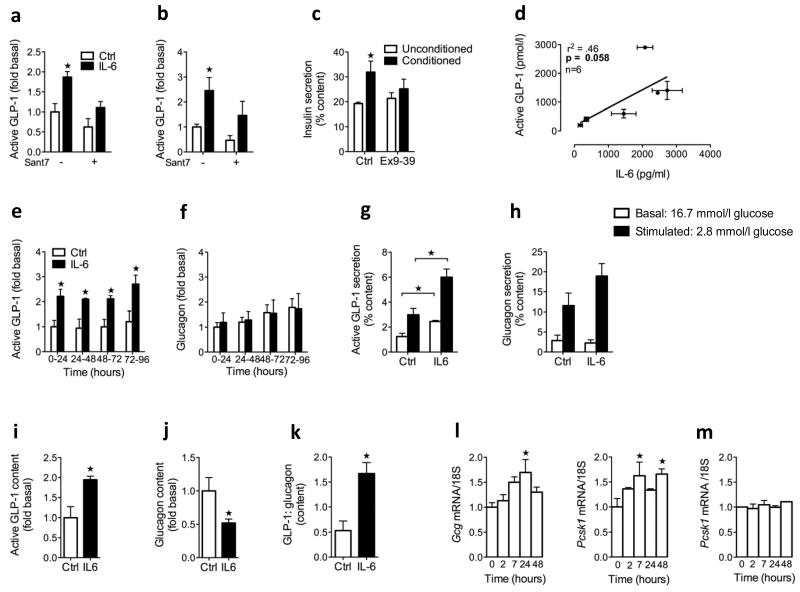Figure 4.
Effects of IL-6 on GLP-1 secretion in human islets and human alpha cells. (a) GLP-1 release (left) over 24 h after 4 d with or without IL-6 and with (+) or without (−) the IL-6 receptor antagonist Sant7 (n = 3). GLP-1 secretion (right) in response to 1 h of static incubation in 10 mM arginine after 5 days with or without IL-6 and with (+) or without (−) Sant7 (n = 3). (b) Human islet insulin secretion in response to 1 h of static incubation in unconditioned or conditioned medium from human islets in the absence and presence of exendin (9–39) (n = 3). (c) Basal GLP-1 and IL-6 released from various human islet preparations (n = 6, r2 = 0.46, P = 0.058). (d) GLP-1 (left) and glucagon (right) released over consecutive 24 h intervals with or without IL-6 (n = 4). (e) GLP-1 (left) and glucagon (right) secretion in response to 1-h glucose incubations after 4 d with or without IL-6 (n = 4). (f) GLP-1 content (left), glucagon content (middle) and GLP-1:glucagon content as a molar ratio (right) after 4 days with or without IL-6 (n = 3–4). (g) FACS-enriched human alpha cell mRNA in response to IL-6 (n = 3–6). (h) FACS-sorted human beta cell mRNA in response to IL-6 (n = 4). Data represent means ± s.e.m. *P < 0.05, determined by Student’s t test comparing control to IL-6 or unconditioned to conditioned medium, or determined by ANOVA (g,h) comparing control (at time 0) to IL-6.

